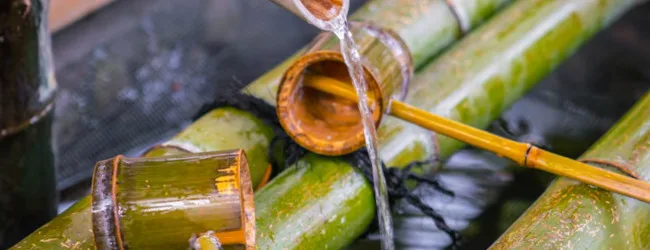Table of contents
- What is Bamboo Farming?
- Benefits of Bamboo Farming
- Suitable Climate and Soil for Bamboo
- Best Bamboo Varieties in India
- Step-by-Step Bamboo Farming Process
- Cost of Bamboo Farming Setup (Per Acre)
- Profit Potential & Income Sources
- Government Schemes & Subsidies (India)
- Challenges in Bamboo Farming
- Real-Life Success Story
- Conclusion
- Frequently Asked Questions (FAQs)
Bamboo farming is rapidly emerging as a profitable and sustainable agribusiness in India. Known as the “poor man’s timber,” bamboo offers a great opportunity for farmers, entrepreneurs, and eco-conscious investors due to its fast growth, high demand, and multiple income streams. In this guide, we’ll walk you through everything about bamboo cultivation—from setup to profits—in the simplest terms possible.
What is Bamboo Farming?

Bamboo farming is the commercial cultivation of bamboo plants for their stems (culms), shoots, and by-products. Bamboo grows faster than most trees and is ready for harvest in 3–5 years, making it a renewable cash crop.
Benefits of Bamboo Farming
- Fast-growing crop: Grows up to 1–1.5 meters/day in some species.
- Low maintenance: Needs minimal irrigation and fertiliser.
- High demand: Used in construction, paper, furniture, agarbatti, and handicrafts.
- Eco-friendly: Releases 30% more oxygen than trees and prevents soil erosion.
- Multiple income streams: Timber, bamboo shoots, handicrafts, biomass.
Suitable Climate and Soil for Bamboo
- Climate: Warm, tropical, and sub-tropical climates (20°C–35°C).
- Rainfall: 1000–3000 mm annually.
- Soil type: Well-drained loamy soil with pH between 5.5–6.5.
- Avoid: Waterlogged, rocky, or saline soil.
Best Bamboo Varieties in India
| Bamboo Variety | Use Case | Growing Time | Avg. Yield/Year |
|---|---|---|---|
| Bambusa balcooa | Construction, Furniture | 4–5 years | 40–60 culms |
| Dendrocalamus strictus | Paper, Agarbatti, Furniture | 3–4 years | 30–50 culms |
| Bambusa vulgaris | Ornamental, Mat weaving | 3–4 years | 25–40 culms |
| Dendrocalamus giganteus | Industrial use, Bioenergy | 5–6 years | 60–80 culms |
💡 Pro Tip: If you want to start a Business but have too many doubts, connect with a Business expert from Boss Wallah for guidance – Check Out
Step-by-Step Bamboo Farming Process
1. Site Selection & Soil Preparation
- Choose a sunny location with good drainage.
- Deep plough the land and remove weeds.
- Add organic manure like cow dung.
2. Planting
- Best time: June–July (monsoon season).
- Spacing: 5×5 meters (400 plants per acre).
- Use saplings or tissue culture plants for uniform growth.
3. Irrigation
- Initial 2 years: Weekly watering.
- After 2 years: Once every 15 days (unless it rains).
4. Fertiliser Management
- Use 2–3 kg of compost per plant/year.
- Apply NPK (10:26:26) once every 3 months in the first year.
5. Pest and Disease Control
- Use neem oil sprays for aphids and mites.
- Mulching helps prevent fungal growth.
Cost of Bamboo Farming Setup (Per Acre)
| Expense Item | Approximate Cost (₹) |
|---|---|
| Land preparation | 10,000 |
| Saplings (400 plants) | 40,000 |
| Fertilizers & manure | 8,000 |
| Irrigation system | 12,000 |
| Labor & miscellaneous | 10,000 |
| Total (1st year) | ₹80,000 |
ALSO READ | Indian organic farming: a vision for a healthy country
Profit Potential & Income Sources
🌟 Income Sources
- Sale of bamboo poles (₹100–₹200 per pole).
- Bamboo shoots (₹50–₹100/kg).
- By-products: Agarbatti sticks, biomass for fuel, handicrafts.
📊 Expected Returns (From 4th Year Onward)
| Revenue Component | Amount (₹) |
|---|---|
| 400 plants × 30 poles × ₹150 | 18,00,000 |
| Shoots + By-products | 2,00,000 |
| Total Revenue (Yearly) | ₹20,00,000 |
| Minus Annual Costs | ₹1,00,000 |
| Net Profit | ₹19,00,000 |
Return on Investment (ROI): Over 20x from Year 4 onward
ALSO READ | The Benefits and Basics of Natural Farming in India
Government Schemes & Subsidies (India)
- National Bamboo Mission (NBM): Up to 50% subsidy on planting and irrigation.
- MIDH Scheme: Grants for bamboo nurseries and processing units.
- PMFME Scheme: Financial support for value-added bamboo products.
🔗 National Bamboo Mission Official Website
Challenges in Bamboo Farming

- Lack of awareness and technical knowledge.
- Market linkage issues.
- Initial investment is high.
- Delayed profits (from the 3rd or 4th year).
Real-Life Success Story
Rajendra Deshmukh (Maharashtra):
He started bamboo farming on 5 acres in 2017. By 2022, he earned ₹75 lakhs from poles and shoots, and also started a bamboo furniture unit employing 10 people locally.
Need Expert Guidance?
Starting a business can be challenging, but you don’t have to do it alone! At Boss Wallah, our 2,000+ business experts are ready to provide valuable insights and guidance. Whether you need help with marketing, finance, sourcing, or any other area of any business, our business experts are here to help you succeed
Confused about Which Business to Start?
Want to start your own business but unsure which one to choose? Explore Boss Wallah, where you’ll find 500+ courses by successful business owners, featuring practical, step-by-step guides on starting and growing various businesses.
Find your perfect business idea today
Conclusion
Bamboo farming is one of the best long-term agricultural investments in India. With the right planning, knowledge, and support, it can turn into a highly profitable and eco-friendly agribusiness. Whether you’re a farmer, entrepreneur, or investor, bamboo offers a green path to sustainable income and livelihood.
Frequently Asked Questions (FAQs)
- How long does bamboo take to grow?
3 to 5 years for commercial harvesting. - Can I grow bamboo in dry regions?
Yes, with drip irrigation and proper care. - Is bamboo farming profitable in India?
Highly profitable from the 4th year onwards. - How many bamboo plants can I grow per acre?
Around 400 plants with 5×5 meter spacing. - Do I need permission to grow bamboo in India?
No. Since 2017, bamboo has been classified as a grass, not a tree. - Which bamboo variety is best for furniture?
Bambusa balcooa and Dendrocalamus strictus. - Can bamboo farming be done organically?
Yes, it requires minimal chemical input. - Where can I sell bamboo?
Local markets, construction companies, handicraft units, and online B2B platforms. - Does bamboo farming require a lot of labour?
Low labour required after initial setup. - Is a government subsidy available for bamboo farming?
Yes, via the National Bamboo Mission and other schemes.


